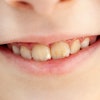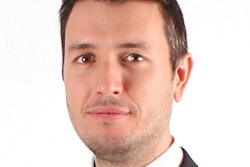
Practitioners who provide more positive reinforcement and reassurance when speaking with pediatric patients were perceived by caregivers to be more patient-centered and empathetic, according to a new study conducted in Hong Kong.
In addition, the inclusion of caregivers in conversation, such as the clinician mentioning the parent or caregiver present, was a key factor in producing a quality clinical experience, the study authors reported in PLOS One (January 3, 2017).
"Unlike the conversations focusing on the treatment procedures, those offering positive reinforcement and reassurance appeared to the caregivers that the clinicians were providing more patient-centered care and showing more concern to the patients, thereby creating more clinician-patient interaction," wrote Hai Ming Wong, PhD, DDS, and colleagues at the University of Hong Kong. "Engaging patient-centered care can help clinicians build stronger clinician-patient relationships for productive engagement in preventive care."
Dr. Wong is a clinical associate professor of pediatric dentistry at the university. Researchers from disciplines such as dental public health, psychology, and education at the university participated in the study.
Saying 'mommy' is helpful
The authors noted that good communication has been found to result in improved patient cooperation, self-care skills, and treatment plan adherence, as well as better treatment outcomes and a lower likelihood of dental anxiety. However, good communication may not be sufficient to achieve these results, with other active ingredients likely embedded within good communication underpinning those effects, they explained.
“Engaging patient-centered care can help clinicians build stronger clinician-patient relationships for productive engagement in preventive care.”
Therefore, they sought to determine how prominent themes in conversation between dental clinicians and their pediatric patients relate to patient satisfaction with the visit and the caregivers' perception of the quality of this communication.
The researchers made video recordings of 162 clinician-patient conversations for 62 pediatric patients during clinical dental visits to the Paediatric Dentistry Clinic of the Prince Philip Dental Hospital in Hong Kong. Additionally, caregivers who brought the patients to the visits completed a 16-item questionnaire.
Dr. Wong and colleagues also used visual text analytics software to quantitatively and qualitatively study the communication of dental clinicians with pediatric patients and their caregivers, an approach they said has rarely been used in oral healthcare communication research. Only conversations between pediatric dentists, dental surgery assistants, pediatric patients, and their caregivers were included.
For the videos recorded, 52% of patients were ages 6 to 10 years, 29% were newborn to 5 years, 15% were 11 to 15 years, and 3% were 16 to 20 years. General dental exams made up 37% of the recorded visits, dental treatments such as scaling and application of fluoride varnish were 44% of visits, and consultations were 19%. The mother was the only caregiver present for 60% of the visits and the father for 21%, while 10% were attended by the mother and father and 9% by a grandmother.
Based on their analysis, the researchers identified five themes covered during clinician-caregiver conversations:
- Disease/treatment
- Treatment procedure-related instructions
- Preparation for examination
- Positive reinforcement/reassurance
- Family/social history
They found that five variables related to the positive reinforcement/reassurance theme significantly predicted patients' perceived satisfaction with the visit, according to the caregivers' questionnaire. However, no variables related to the other four themes predicted perceived satisfaction. The related variables were the following:
- Percentage of related utterances or phrases spoken in total number of utterances
- Percentage of time spent in total time duration
- Number of related words
- Percentage of related words in total number of words
- Number of related utterances
Higher scores on caregivers' perceived quality of communication were predicted by more frequent use of certain words, including mommy, daddy, girl, boy, sister, look, and outside, and more frequent spoken phrases or sentences. These included statements such as, "Let mommy have a look," "Parents can take a seat here or outside," and "Good girl!"
The authors said their findings highlight the potential impact of clinicians using various types of communication intentionally and strategically during pediatric patient visits. They noted the ongoing shift in the focus of research on clinician-patient interactions from doctor-centered to patient-centered approaches.
More research needed
In recent years, pediatric dentistry in the U.S. has begun to focus on the importance of communication related to caregivers during dental visits, according to Paul Casamassimo, DDS, director of the American Academy of Pediatric Dentistry's Pediatric Oral Health Research and Policy Center.
"In the U.S., the buy-in of parents in all aspects of pediatric dental care, from preventive compliance to safety to source allocation, is critical," he said in an interview with DrBicuspid.com. "One can't simply be a great technical dentist anymore. We know that already with regard to children's dental care and, as such, have used communicative techniques for decades with children. Only more recently have we appreciated the value and critical nature of parental communication."
He added that many training programs, including at Nationwide Children's Hospital and Ohio State University College of Dentistry in Columbus, where he is a professor, have more recently incorporated parental communication into a behavior guidance curriculum, whereas a few years ago they just focused on chairside behavior considerations with children.
Much of the expertise being provided regarding pediatric dental communication is coming from the communications field, whereas the current study is one of the very few to conduct research on pediatric dental communication, Dr. Casamassimo said.
The authors acknowledged limitations of their study, including not studying direct feedback from pediatric patients and analyzing only verbal communication and not nonverbal interactions. They also did not examine environmental variables, such as patient waiting time, and demographic variables, such as patient age and types of caregivers.
Clinician conversations with preschoolers and with teenagers can be very different, and more research is needed regarding the relationship between age and perceived satisfaction, the authors wrote.
"The clinicians should consider the function of various verbal utterances and types of communication to improve patients' and their caregivers' satisfaction, patient understanding, and patient compliance/adherence," they concluded. "The method used for analyzing the provider-patient encounters in this study can be used to help teach/train dental clinicians."



















